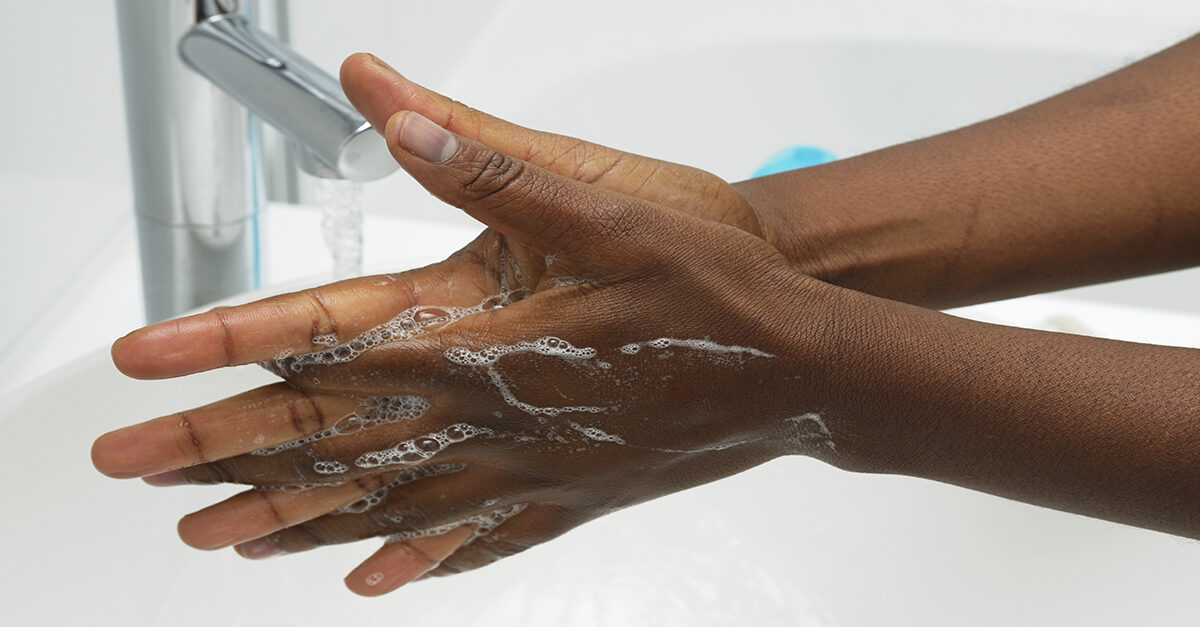The easiest pathway for germ transmission is through the hands, especially when high-touch surfaces—such as doorknobs, restrooms, storage areas, refrigerator handles, and desks—are not frequently cleaned. According to the U.S. Centers for Disease Control and Prevention (CDC), handwashing is one of the best ways to avoid the spread of germs. It has been an integral part of infection prevention during the COVID-19 pandemic and will continue to be an essential public health measure.
Knowing how and when to wash your hands is more important than ever as germs and viruses continue to spread throughout facilities. Following the proper steps for handwashing and drying, along with using the right products, is key to mitigating the spread of germs and avoiding skin irritation.
Tips for handwashing success
Proper handwashing includes using soap and warm water and scrubbing for at least 20 seconds to remove germs. Done correctly, handwashing can reduce the occurrence of respiratory illnesses by up to 21%, the CDC reports. To encourage handwashing, facilities should ensure soap is always available in restrooms, kitchens, and near all sink areas. Consider touchless soap and paper towel dispensers to encourage proper hand hygiene practices, offer a sanitary environment, and promote positive brand image.
Fully stocked restrooms provide an ideal experience for customers and employees. A recent Harris Poll commissioned by Cintas found that 90% of surveyed U.S. adults believe employers who provide well-stocked workplace restrooms care more about their employees than employers who do not.
Warm water and soap are not always readily available, especially near high-touch surfaces such as registration desks or elevators. In these instances, using a hand sanitizer with at least 60% alcohol before and after touching your eyes, nose, mouth, or mask; when entering and leaving a public place; or when coming into contact with high-touch surfaces is recommended by the CDC. Facilities can utilize desktop or standing dispensers to make sanitizer more accessible.
The importance of drying
It’s easier for germs to transfer to wet hands, which is why it’s critical to thoroughly dry with a clean, disposable paper towel to maximize the benefits of handwashing. Research, including a 2018 study published in the journal Applied and Environmental Microbiology, found hand dryers can spread germs throughout a restroom. According to a 2017 survey conducted by Cintas, 69% of surveyed Americans prefer to use paper towels over air dryers in public restrooms. One of the top reasons cited for this preference was that paper towels provide something to open the restroom door with.
For example, after drying, restroom patrons can use the towel on the sink faucet and door handle to avoid transmitting germs onto clean hands. A trashcan next to the restroom exit will give them a convenient place to throw away the used paper towel to avoid unwanted trash spread throughout the facility. Facility managers may want to consider touchless paper towel dispensers that release only one towel at a time to minimize wasted resources and overconsumption.
Consider gentle hygiene products
Increased handwashing can cause various skin reactions such as dryness, irritation, itching, cracking, and—in more extreme cases—bleeding. Soap and sanitizer products formulated with harsh ingredients can make or break the handwashing experience by increasing the risk of skin irritation.
When choosing hand care products, facility managers should consider those that contain skin conditioners instead of harsh chemicals. In facilities that require antibacterial hand cleansers, use antibacterial gel or foaming hand soaps that are formulated with mild ingredients. Facilities such as schools, daycare centers, restaurants, and hotels should invest in moisturizing hand soaps and sanitizers that are gentle for everyday use.
Give a high-five for hand hygiene
As hand hygiene remains a critical step in preventing the spread of germs, facilities must provide products that ease the handwashing process while keeping skin intact. Offering soaps and sanitizers that are mildly formulated with skin conditioners, along with innovative dispensers designed to keep restrooms stocked, can positively affect customer perception and slow the spread of germs throughout facilities.




